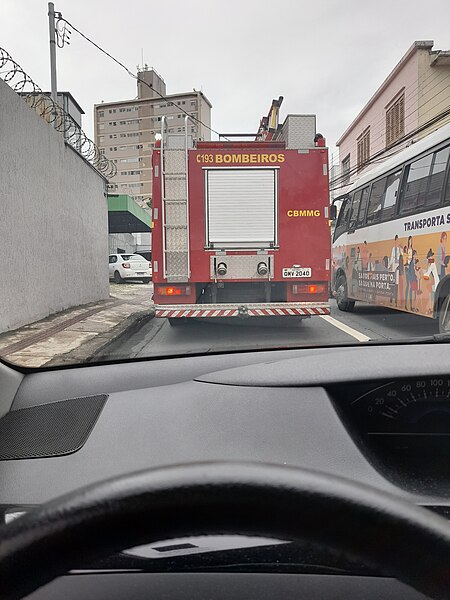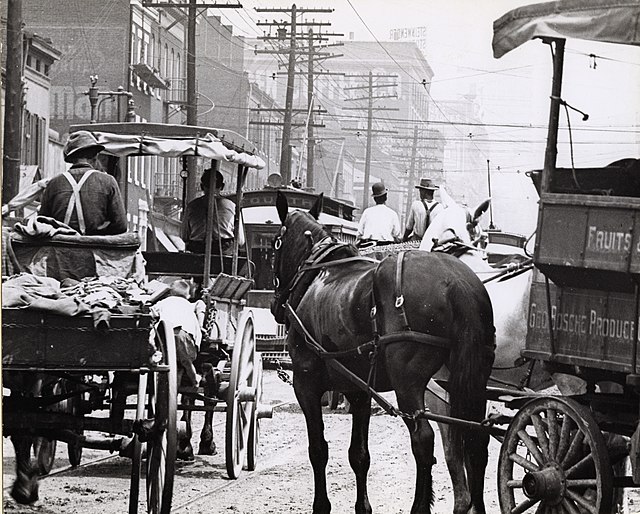Left- and right-hand traffic
Left-hand traffic (LHT) and right-hand traffic (RHT) are the practices, in bidirectional traffic, of keeping to the left side and to the right side of the road, respectively. They are fundamental to traffic flow, and are sometimes called the rule of the road. The terms right- and left-hand drive refer to the position of the driver and the steering wheel in the vehicle and are, in automobiles, the reverse of the terms right- and left-hand traffic. The rule also includes where on the road a vehicle is to be driven, if there is room for more than one vehicle in the one direction, and the side on which the vehicle in the rear overtakes the one in the front. For example, a driver in an LHT country would typically overtake on the right of the vehicle being overtaken.
Parts of Canada were LHT until the 1920s, shown here in Saint John, New Brunswick, 1898.
Crossover bridge near the Takutu River Bridge between Guyana (LHT) and Brazil (RHT)
The Lotus Bridge exchanges between LHT in Macau and RHT in mainland China.
Left-hand traffic in Vienna, Austria, circa 1930
Traffic comprises pedestrians, vehicles, ridden or herded animals, trains, and other conveyances that use public ways (roads/sidewalks) for travel and transportation.
Crossing from Fort Lee, Bergen County, New Jersey, into Manhattan in heavy automobile traffic on the George Washington Bridge, the world's busiest motor vehicle bridge, transporting approximately 300,000 cars and trucks daily across the Hudson River.
Traffic in Brazil
Congestion in St. Louis, Missouri, early 20th century
Traffic controller on Michigan Avenue in Chicago, Illinois








